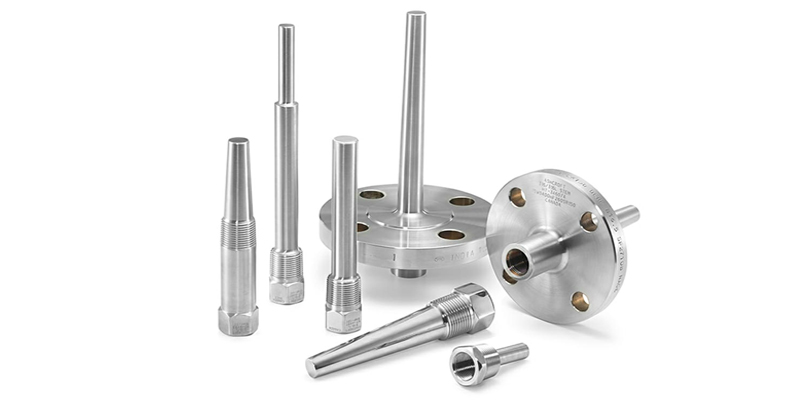
The development of a thermocouple is exceedingly simple; it’s really just two different metal wires that connect to each other at the two ends. One of those connections, the reference junction, can usually be tucked away in a safe place, far from hostile environments. However, the measurement junction will always be in the thick of things, potentially enduring measurements within extreme temperatures, pressures, or corrosive process mediums. Leaving these wires exposed to the environment will shorten their lifespan, especially in the hot temperatures above 800ºC or above where no other temperature sensors go. That said, there are a handful of ways of how to protect a thermocouple and add protection to the measurement junction wires.
- Using MI ( Mineral Insulated Cables ).
- Use a Thermowell.
- Sheath it in Steel.
- By using Vaccum while Construction Of a Thermocouple.
Using MI ( Mineral Insulated Cables ).

Mineral insulated cable, or MI cable for short; is a length of cable filled with some type of insulative mineral. There are a few different versions of MI cable but for thermocouples, it is typically comprised of three things: stainless steel sheathing; two differing thermocouple wires; and an insulating powder.
The stainless steel tubing is really definitely simply a sturdy container to keep the insulating powder and thermocouple wires together. Naturally, it also provides the thermocouple with all the protective measures.
The two differing thermocouple wires are a requirement to measure the two differing voltages that tell us the temperature of the process. K-type MI cable, for example, will have a Chromel and an Alumel wire running inside the length of the stainless steel tubing. Some MI cables can contain four wires, or two thermocouples, to provide more accuracy and redundancy. A dual J-type MI cable, for example, has two wires of iron, and two of Constantan. Each thermocouple pair provides its own voltage differences to be measured and interpreted. Some specialized MI cable might even have 3 pairs of wires within.

The insulation within MI cable is usually comprised of magnesium oxide, or MgO, powder. One can use, Aluminum oxide as a cheaper alternative but it cannot withstand as high a temperature as MgO. When tightly packed around the wires within a sheath, the powder acts as an electrical resistive barrier, reducing the effects of moisture and letting the thermocouple read true. It also provides excellent thermal conductivity; any temperature changes will transmit quickly and allow for fast responses to a fluctuating process. A secondary effect of filling the stainless steel sheath with powder is that it makes the whole composition more rigid, adding to the durability of thermocouples made from MI cable.
Use a Thermowell.

Thermowells are tubular fittings used to protect temperature sensors installed in industrial processes. A thermowell consists of a tube closed at one end and mounted in the process stream. If the sensor fails, it can be easily replaced without draining the vessel or piping. .Metal thermowells are available in Brass, Carbon Steel 304 and 316 SS and Monel.
Ceramic protection tubes are used for applications where contamination from hostile environments or the cutting action of concentrated and direct flame impingement are factors. Such conditions usually require a noble metal thermocouple such as platinum or platinum alloys.
Sheath it in Steel.
Stainless steel is a standard in temperature sensor shielding. The material is cheap, plentiful, and comes in all sorts of sizes to fit many designs of thermocouples. The protective tubing is typically found in ¼” diameters and can run as long as a few feet in length, or even longer. The size of ¼” provides a good compromise between cost, rigidity, strength, and practicality. Smaller diameters, such as ⅛” or even tinier: like needle-sized thermocouples used for medical procedures, do exist. But the skinnier the probe the less physical abuse it can withstand and the shorter the probe. Alternatively, larger diameters exist but at a higher material cost and less responsivity.
You’ll find these wide and strong thermocouples in specialized industrial uses, like the measurement of oil well environments where the monetary cost and decrease in accuracy easily outweigh the risk of breaking or damaging a sensor thousands of feet deep underground.
By using Vaccum while Construction Of a Thermocouple.
Just like at some stage in the manufacturing process, special factors can combine with the thermocouple wires over time and exchange their composition. These reactions will essentially exchange how the thermocouple reads. Therefore making the instrument greater inaccurate over time and finally requiring a replacement. To remove impurities round the steel wires you can seal a thermocouple inside a vacuum. By encompassing them in a vacuum the hazard of their electromagnetic traits being altered is lessened and they will file voltages genuine to their respective kinds for a longer lifespan.












